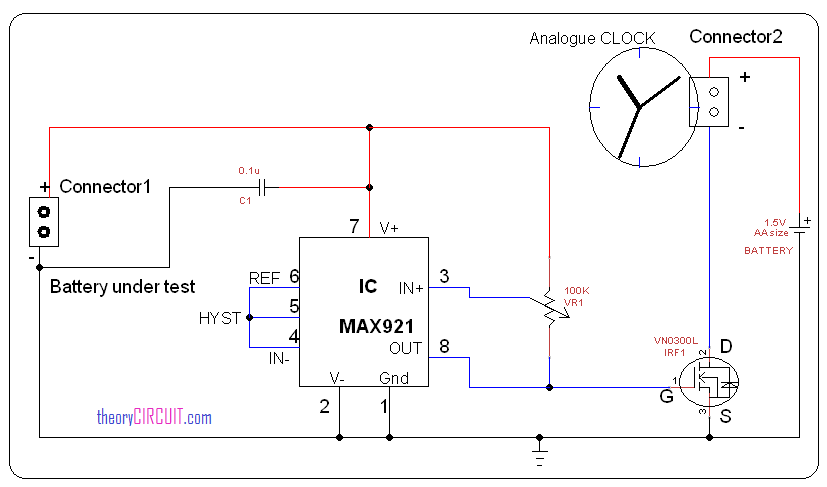Last Updated on March 16, 2024
To measure battery life is time consuming task and providing high load to discharge the battery don’t provide reliable result. A battery drain meter also known as a battery discharge monitor or battery drain analyzer, is a circuit designed to measure the rate at which a battery loses its charge over time. This circuit tool is particularly valuable for electronic devices and systems powered by batteries, and it serves pre testing of battery life.
Hence this circuit constructed with IC MAX921 and a analog clock to measure accurate battery drain duration, this is a application not for MAX 921 IC from maxim integrated. The MAX921 stands out as a Ultra Low-Power, Single and Dual-Supply Comparator. Known for its low supply current, this component is particularly advantageous in battery powered applications, contributing to efficient power management and extended battery life.
Its wide input voltage range provides flexibility in circuit design, accommodating various voltage levels. The high accuracy of the MAX921 is crucial for applications where precise voltage comparisons are important, such as in battery monitoring circuits. The fast response time adds to its appeal, enabling quick and accurate detection of voltage changes, making it suitable for signal conditioning and rapid response systems.
Circuit diagram for battery drain meter
Construction and Working
This circuit constructed with IC MAX 921 and analogue Quartz clock, here the analogue clock connected with battery (1.5 volt AA size) and -Ve terminal of clock connected with drain terminal of MOSFET this is controlled by the output of IC MAX 921 and this circuit is powered by the testing battery when the testing battery dryed means then there is no output from MAX 921 so the MOSFET drain open.
Hence the analogue clock stop at particular hour by observing the clock we can get to know the battery drain range.
You can get datasheet of IC MAX921-MAX924 here.

